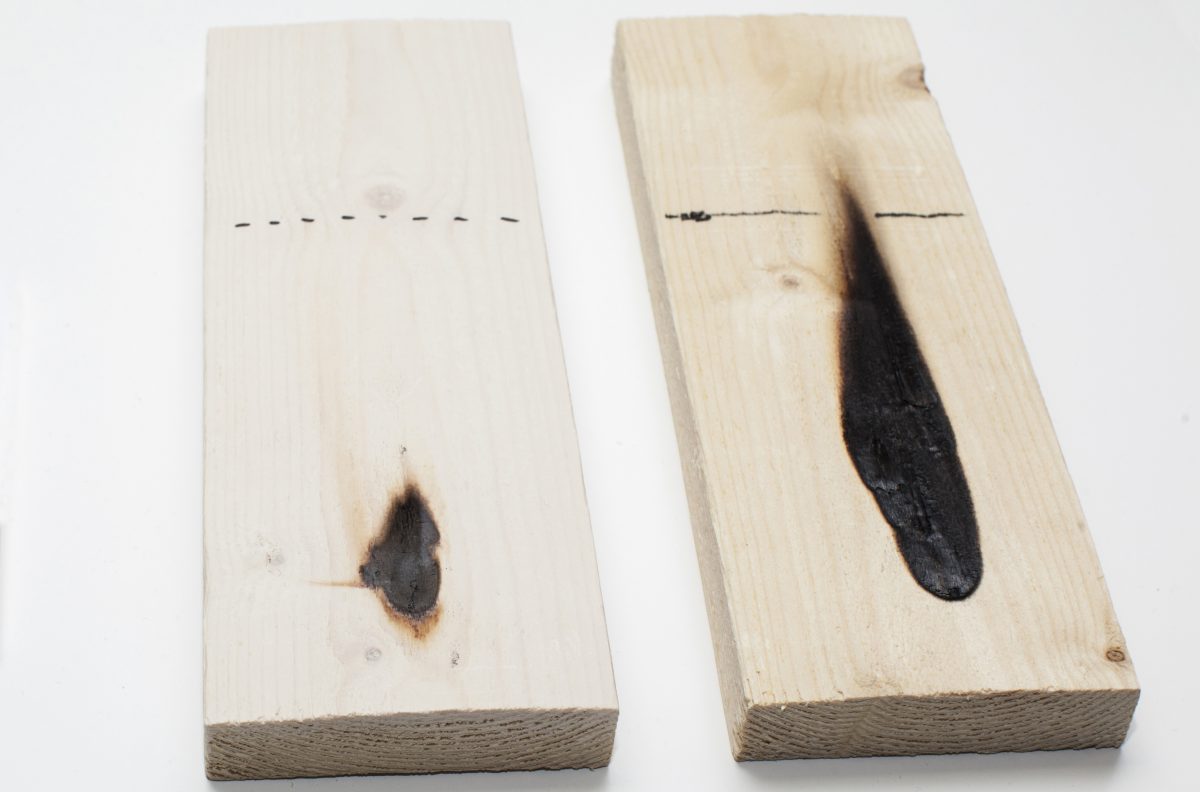VTT develops highly fire retardant coating from biomaterials
A spray- or brush-applied fire retardant coating made from nanocellulose is well suited for improving the fire properties of wood-based materials. It reduces the access of oxygen to the surface, thus significantly inhibiting combustion. The coating is set to revolutionise the market for coatings used in the fire retardant treatment of construction materials. VTT has found an effective production method for the coating through piloting and is currently seeking a partner to commercialise the technology.
The fire retardant coating is based on HefCel technology (High-Consistency Enzymatic Fibrillation of Cellulose) developed and patented by VTT. HefCel technology enables the efficient and cost-effective production of nanocellulose from wood-based pulp. The solids content of HefCel materials is ten times the solids content achieved with traditional manufacturing methods. This makes them well suited for uses where low water content is preferred: for example, paints and coatings, packaging and composites.
Nanocellulose has a natural tendency to adhere to wood and to form an airtight film on the surface of wood and various other small particles such as pigments. This makes nanocellulose-based coatings highly suitable for the protective treatment of wood surfaces. Combining HefCel nanocellulose with organic pigments forms a spray- or brush-applied, airtight film that prevents the access of oxygen through the coating and at the same time significantly inhibits combustion.

The idea was developed by VTT research scientists Vesa Kunnari and Jaakko Pere as part of the Design Driven Value Chains in the World of Cellulose (DWoC) project funded by Tekes (now Business Finland).
With its new piloting equipment VTT is now able to manufacture bigger HefCel batches. The research scientists were pleased with the quality of the first trial batch and the energy-efficiency of the production method. – We have many more good ideas about how to simplify the process and make it even more efficient, says Senior Scientist Panu Lahtinen from VTT.
Exploring the potential to commercialise the technology has been funded by Business Finland and under VTT’s ‘New knowledge and business from research ideas’ funding programme. A project implemented under the funding programme studied, for example, the suitability of HefCel technology as a paint and coating industry raw material.




















